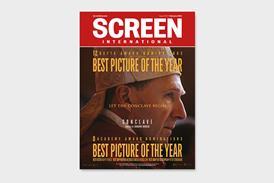How the industry can learn from the past and reinvent itself.
Michael Williams-Jones worked in the international film industry for nearly 40 years, including serving as president of United Artists International, and serving as one of the founders of UIP, where he worked for more than 15 years.
Santayana the Spanish American Philosopher, once said, ” Those who fail to remember the past are condemned to relive it.” Visionary words indeed and especially so if applied to the conventional wisdom of many of today’s studio & cinema movers and shakers.
Cinemas around the world with notable exceptions are yet again beginning to look tired and somewhat unloved. Take a really close look the next time you go to the movies….band-aid remedies have replaced grand imaginative cinema projects. Similarly, studios appear to be narrowly fixated on “safe bets.”
So, sequels, prequels, CGI extravaganzas, remakes, teen fare and the 3D Messiah dominate current Hollywood cinema. The older audience is all too often overlooked or ignored. A collective amnesia and wrist wringing bordering on panic has crept in whilst costs continue to rise and revenues slide. The long enjoyed safety net of ancillary revenue from multiple streams most notably DVD, has dissipated. Too many film makers today follow trends rather than create them and all too often the poor beleaguered moviegoer after paying the inflated price of todays admissions is left feeling ripped off.
3D, which has made a periodic appearance on cinema screens since the 1930s, is a wonderful and enchanting visual experience but the studios are in danger of undermining its unique charms by saturating the crowded market with sub-standard garbage simply to capitalise on the 3D boom and its opportunistically higher price of admission. They may well kill the goose that laid the golden egg.
Similarly, In an ill-informed effort to stimulate ancillary revenue and stabilise the economics of feature film production & marketing, several studios are again tampering dangerously with the vexing question of theatrical windows.
The timing of course couldn’t be worse. So the vicious cycle starts again…Cinema operators reasonably feel threatened and may opt to sell out or defer or cancel improvements and new projects, and the public is left more confused than ever.
The industry is systemically volatile — this is its very nature and traces back to its birth. Its young history also reveals that it has lurched from triumph to disaster in roughly equal measure yet somehow it has always managed to conjure up the next big new idea, the idea that breathes in the critically needed fresh oxygen. Sound, colour, 3D, Cinemascope, Dolby Stereo, multiplexing, etc.— each in its own way created its own new dynamic.
During the height of the depression, cinema palaces designed to intentionally awe a disillusioned public were dreamed up & built. Then years of decline began to set in, admissions fell and panic set in, but once again from the mid- to late- 1970s, visionary industry leaders and cinema operators with a vested interest in a constantly renewed infrastructure like Sumner Redstone, Lew Wasserman, Charlie Bluhdorn and the Village Roadshow group in Australia amongst others reinvented the movie palace concept and restored the industry from its decayed and much neglected post-war state.
Multiplexing was born and it proliferated around the world. Film-makers like Coppola, Lucas, Scorsese and Spielberg rose to the challenge of a renewed industry with original and compelling movies…movies that challenged, stirred and fired up the imagination of their their audiences. They were movies that set the trends. Political evolution in many countries together with increased wealth soon created a truly global growth industry with non-US markets contributing the lion’s share of global revenues. Admissions rose and the long-dormant cinemagoing habit was reborn.
But complacency and insecurity is once again creeping in just at a time when the industry is in desperate need of boldness and a fresh vision. Instead of encouraging renewed creativity and nurturing imagination, it fiddles with quick fixes and easy options. Of course it should be dreaming up the next big new idea.
After long being viewed as the so called loss leader in the audio visual economic mix, due to the meltdown of the ancillary streams, theatrical is once again its undisputed star. It is where the alchemy begins, where the addictive fascination for film is brewed, where stars are born. It all happens, as it always has, right there in that darkened atmospheric auditorium with an appreciative audience.
So the lessons from the past?
- Do not give up on or even think of compromising the unique and irreplaceable position of theatrical, it was always and still is the core business. It is where the essential value is created and it is still the critical component in building up a lifetime appreciation for film.
- Use new technologies and reinvented processes like 3D prudently and dynamically.
- Don’t undermine the industry with short-termism & quick fixes; rather, continue to believe in it and never stop reinventing it.
- Employ both creative and investment capital in making the whole movie going experience something truly unique, exciting and genuinely accessible.
- Search wider afield for compelling stories in our ever-shrinking world.
- Remember who your audience is and perhaps more importantly who it could potentially be.
- Encourage and aggressively develop new writers.
- Have courage…Know your history and destiny and settrends that lead the public to new plateaus in the cinema experience - Folks, its really what they want!
- Above all, never forget what cinema is all about…Yes it can inform and challenge but above all it must entertain!






















2 Readers' comments